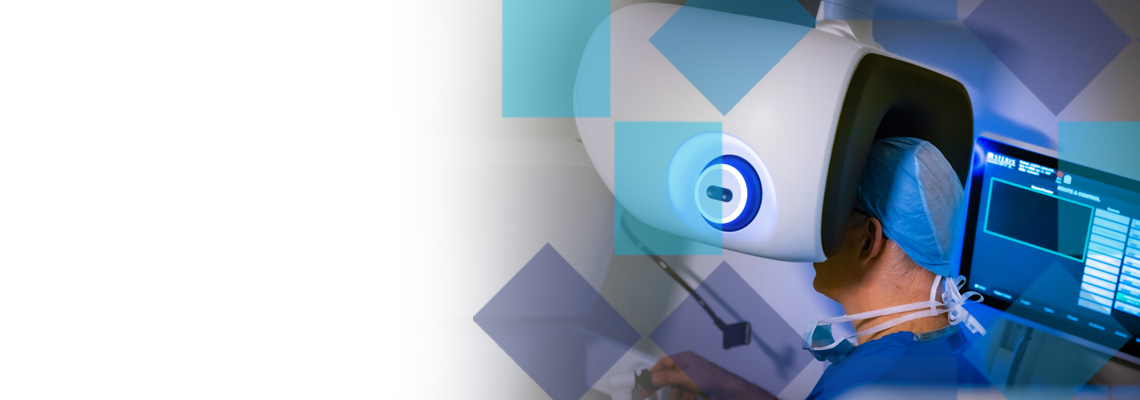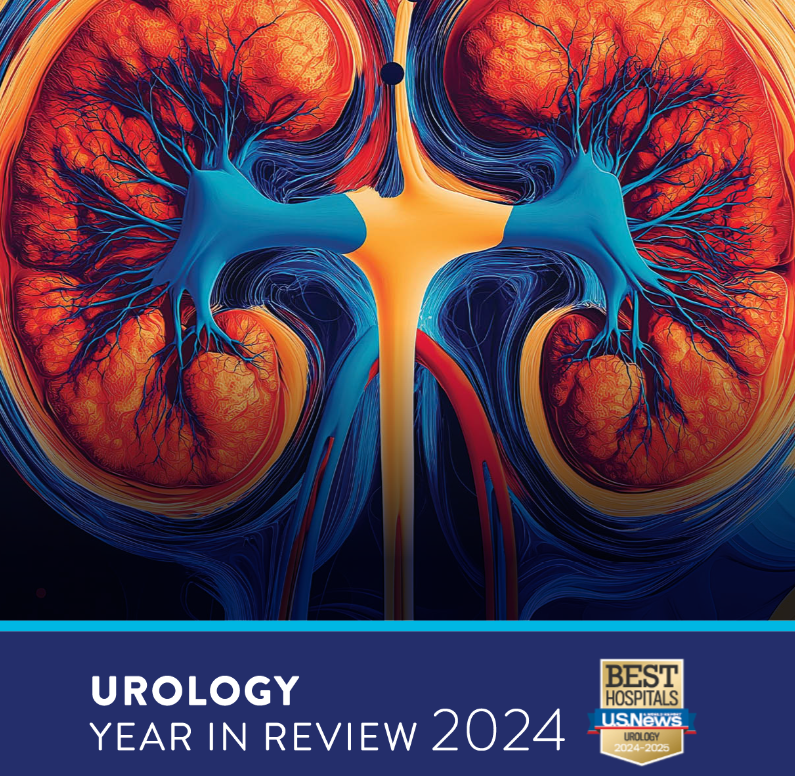Treatment for Men's Urination Problems in New Jersey
If you are having trouble with urination, you can trust the experts at Hackensack Meridian Health to diagnose and treat your condition so you can regain your quality of life.
You should see a urologist if you’re experiencing changes to your urinary habits, such as:
- Frequent trips to the bathroom
- Incontinence or leaking urine
- Weak urine stream
- Trouble getting your urine stream started and completely stopped
- Inability to completely empty your bladder
Diagnosing Urination Problems
Your urologist will conduct an exam and tests to determine if you have a urinary condition.
Treatment Options for Enlarged Prostate
Your urinary problems may be caused by an enlarged prostate. Enlarged prostate or benign prostatic hyperplasia (BPH) occurs in almost all men as they age and is common starting at age 40 and older. Symptoms usually begin slowly and then suddenly become more bothersome.Your urologist will assess your condition and the severity of your symptoms before developing a personalized treatment plan for you. If surgery is recommended, our urologists are skilled at performing the latest, most minimally invasive procedures.
 Aquablation® therapy is an option for men whose prostate enlargement cannot be effectively treated using prostate-shrinking medications. Aquablation therapy is performed using the AquaBeam Robotic System, guided by real-time imaging to deliver treatment with extraordinary precision. Aquablation therapy is indicated for any man whose prostate is causing an obstruction, and who cannot achieve relief with medication or do not want to take these drugs. Learn more about Aquablation.
Aquablation® therapy is an option for men whose prostate enlargement cannot be effectively treated using prostate-shrinking medications. Aquablation therapy is performed using the AquaBeam Robotic System, guided by real-time imaging to deliver treatment with extraordinary precision. Aquablation therapy is indicated for any man whose prostate is causing an obstruction, and who cannot achieve relief with medication or do not want to take these drugs. Learn more about Aquablation.
"Aquablation therapy is as effective as these other treatments but with fewer side effects, including only a 10-15% risk of retrograde ejaculation," explained Ravi Munver, M.D., vice chair of Urology at Hackensack University Medical Center. "Because it is performed using the surgical robot with ultrasound guidance, it can be completed more rapidly, and with a level of precision that is reproducible from surgeon to surgeon. You can see where the prostate capsule ends and remove more excess tissue. Aquablation therapy is the only heat-free ablation approach available to treat BPH."
Here's how it works: The patient is asleep under anesthesia. An ultrasound probe is inserted into the patient's rectum to produce clear real-time images of the prostate. The addition of ultrasound imaging enables the surgeon to map the parts of the prostate to remove and the parts to avoid. The Aquablation scope is inserted into the urethra. When ready to begin, the surgeon presses on a pedal and the Aquablation system advances to the prostate, delivering a heat-free waterjet so intense that it can remove the prostate tissue that has been mapped out.
Incontinence Causes, Types and Treatments
Incontinence, or leaking urine, can be embarrassing and affects your ability to participate in normal activities. Once we have established a diagnosis of the cause and type of incontinence, our team will create a treatment plan specifically for you.- Previous prostate treatment
- Urinary tract infections
- Bowel problems
- Prostate problems
- Kidney or bladder stones
- Neurological problems, such as Parkinson’s disease or stroke
- Stress incontinence: urine leakage caused by pressure on your bladder when coughing or sneezing
- Urge incontinence: when you feel a strong need to urinate
- Overflow incontinence: when your bladder becomes too full
- Behavior and bladder training: This may include delaying urination to lengthen the time between trips to the toilet, learning to fully empty your bladder, and managing the amount and types of fluids you drink.
- Pelvic floor therapy: Our specially trained nurse will teach you to perform specific exercises such as Kegels that strengthen the muscles that control urination.
- Medications: A number of medications are available to help manage incontinence and overactive bladder.
- Percutaneous tibial nerve stimulation (PTNS): PTNS works by indirectly providing electrical stimulation via a nerve in your ankle to the sacral nerves responsible for bladder control. The stimulation gradually improves bladder activity. This outpatient treatment is delivered in weekly 30-minute sessions for about 12 weeks.
- Botulinum toxin type A (Botox®): Botox is injected into the bladder muscle to relax it and allow the bladder to fill with more urine before you have the urge to go to the toilet.
- Sacral nerve stimulation: A device like a pacemaker is implanted under your skin to deliver ongoing, painless electrical pulses to the sacral nerves involved in bladder control. Stimulating these nerves can control incontinence. This device may be implanted under the skin in your buttock and connected directly to the sacral nerves or may deliver pulses to the sacral nerves via a nerve in your ankle.
- Artificial sphincter: A device made of silicone rubber is placed around your urethra. The device can be inflated or deflated to control urination.
- Male urethral sling: A synthetic mesh-like surgical tape is placed under the urethra to provide support and prevent leakage of urine.
Why Choose Hackensack Meridian Health
The Department of Urology at Hackensack University Medical Center, a nationally ranked program by U.S. News & World Report, is renowned for its high-quality urologic care, including excellence in research and clinical outcomes.
- 6 subspecialties with fellowship-trained urologists
- 2 Joint Commission Disease-Specific Care Certifications in prostate cancer and kidney cancer
- 6 consecutive Magnet designations by the American Nurses Credentialing Center for nursing excellence
Frequently Asked Questions
A visit to diagnose urination problems typically involves a comprehensive evaluation. This will likely include:
- A discussion of your symptoms and medical history.
- A physical exam, which may include a digital rectal exam (DRE) to check the prostate.
- A urine test to check for infection or other abnormalities.
- Depending on the initial findings, your doctor may recommend further tests like urodynamic studies (to see how well your bladder is working) or a cystoscopy (a thin camera used to look inside the bladder and urethra).
Hackensack Meridian Health offers a range of treatment options, including:
- Lifestyle Changes: Modifying fluid intake and diet.
- Medications: Prescribing drugs to relax the prostate muscles or shrink the prostate.
- Minimally Invasive Procedures: Advanced options like the UroLift® System (which lifts and holds prostate tissue out of the way) and Rezūm™ Water Vapor Therapy (which uses steam to reduce prostate tissue).
- Laser Surgery: Procedures like HoLEP (Holmium Laser Enucleation of the Prostate) to remove tissue that is blocking urine flow.














